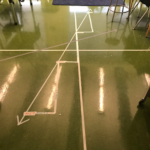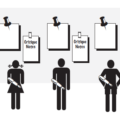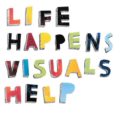Integrate ‘Writing for Visual Narrative’
A method for introducing universal design to students as they tackle any story-based writing assignment with the goal of including... View Article

Use Text-to-Speech for Math Word Problems
Text-to-Speech can support student decoding of symbols and understanding when doing word problems. Example: Use google docs or other text-to-speech... View Article

Use Multilingual and Visual Guides for Vocabulary
By using vocabulary frames like the Frayer model, emerging bilingual students are given the opportunity to learn new vocabulary in... View Article

Use Stories to Explore Number Patterns
Use a sequencing story or song to explore how growing patterns work. Example: After sharing a story or song such... View Article

Graph Coordinates on the Floor
Create a cartesian plane on the floor for students to practice their graphing skills. Example: Create cartesian plane on the... View Article

Support Vocabulary With Online Tools
Student vocabulary development can be supported with the use of online tools that review and reteach. Example: To meet the... View Article

Anticipate High-Probability Learning Barriers
Many learning barriers are common and can be anticipated in advance. Example: When I start planning a lesson plan through... View Article

Read with Actively Learn
Support student reading of complex texts by annotating, adding video and images with Actively Learn. Example: A struggling reader is... View Article

Support Fiction Comprehension with Images
As students get older, the books we read to them have fewer visuals to support comprehension. Teachers can create a... View Article

Pair Text with Visuals to Increase Comprehension
When students are early readers they use pictures to support understanding of the text; Informational texts and adolescent novels rarely... View Article

Write Directions and Steps as Checklists
Numbered, sequential directions may benefit students who have difficulty with getting started, sustaining a task or organizing work. Students can... View Article

Provide Audio Versions of Books
Students who are not fluent readers or who are reading below grade level may benefit from access to grade level... View Article

Provide Magnifying and Colored Overlays
Allow students to use magnifying or color-changing overlay sheets in order to accommodate low vision or visual processing differences. Example:... View Article

Use Easy-to-Read Fonts
When creating classroom materials, use fonts that are not difficult to read. Example: Some fonts have been identified as being... View Article

Install Plugins for Chrome that Customize Display
Google Chrome offers free plugins that allow users to customize the display of text and images, allowing greater access to... View Article

Enable Captions for Auditory Text
By giving a visual alternative to auditory text, teachers can support the perceptual needs of diverse learners. Example: Enabling closed... View Article

Do Guided and Shared Readings Together
Readings are “shared” aloud with pauses for students to process. Example: A short passage is read to a class with... View Article